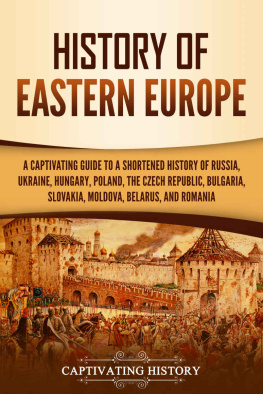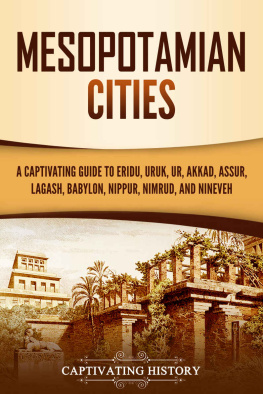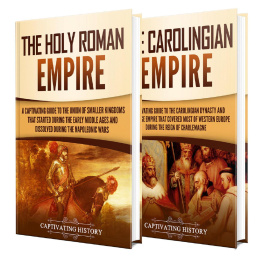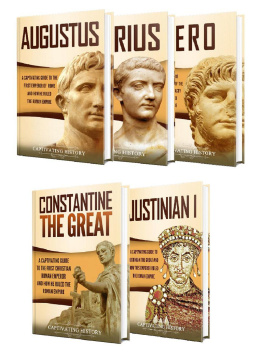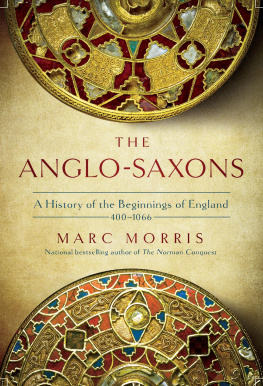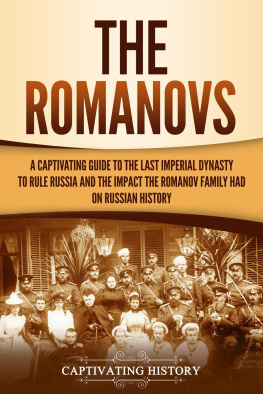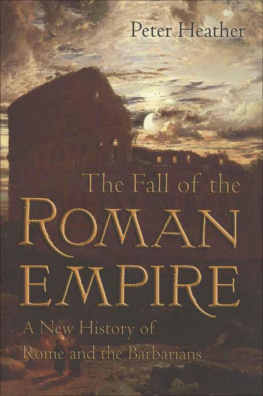History of the Barbarians
A Captivating Guide to the Celts, Vandals, Gallic Wars, Sarmatians and Scythians, Goths, Attila the Hun, and Anglo-Saxons
Copyright 2019
All Rights Reserved. No part of this book may be reproduced in any form without permission in writing from the author. Reviewers may quote brief passages in reviews.
Disclaimer: No part of this publication may be reproduced or transmitted in any form or by any means, mechanical or electronic, including photocopying or recording, or by any information storage and retrieval system, or transmitted by email without permission in writing from the publisher.
While all attempts have been made to verify the information provided in this publication, neither the author nor the publisher assumes any responsibility for errors, omissions or contrary interpretations of the subject matter herein.
This book is for entertainment purposes only. The views expressed are those of the author alone, and should not be taken as expert instruction or commands. The reader is responsible for his or her own actions.
Adherence to all applicable laws and regulations, including international, federal, state and local laws governing professional licensing, business practices, advertising and all other aspects of doing business in the US, Canada, UK or any other jurisdiction is the sole responsibility of the purchaser or reader.
Neither the author nor the publisher assumes any responsibility or liability whatsoever on the behalf of the purchaser or reader of these materials. Any perceived slight of any individual or organization is purely unintentional.
Table of Contents
A Captivating Guide to Ancient Celtic History and Mythology, Including Their Battles Against the Roman Republic in the Gallic Wars

T oday, the word Celtic means so many things. To most of us, it means something related to Ireland. We think of intricately designed Irish crosses, four-leaf clovers, and some of the more well-known stories of Celtic mythology. However, while Celtic culture has stayed alive in Ireland, its roots run much deeper, and they extend much farther than the small island nation off the coast of modern-day Great Britain.
The Celts could actually trace their roots back to the Bronze Age. The Hallstatt culture that developed around the Danube River in Austria gave way to the La Tne culture, and, over time, the Celtic language emerged. This set the stage for the Great Celtic Migrations, which started in roughly 500 BCE and ended in c. 100 BCE. During these 400 years, the Celts, in seemingly endless waves, spread out throughout Europe, raiding local tribes and claiming territory for their own, so much so that by 200 BCE, the Celtic language was being spoken in the modern-day nations of Britain, France, Spain, Portugal, Germany, Austria, Switzerland, the Czech Republic, Poland, Slovakia, Bulgaria, Croatia, Italy, and, to a lesser extent, Turkey.
However, while its easy for us to see that the Celts had a profound impact on the rise of European civilization, its difficult for us to see pretty much anything else. The Celts wrote nothing downtheres even evidence to suggest they scorned the activitybut its more likely they simply didnt have a written language. This means that our knowledge of these ancient peoples is limited to what the archaeological evidence tells us. There are considerable references to Celtic people in Greek and Roman texts, but these are difficult to take as fact given that the Greeks and Romans did not speak Celtic and therefore would have been limited in their ability to communicate.
Because of this lack of sources, modern-day perceptions of Celtic culture are typically exaggerated or just plain wrong. Most of us think of the Celts as being a barbarous, warring people with little or no social structure or value for human life. But this image comes straight from Greek and Roman interpretations of the culture and does not accurately reflect what the ancient Celts were really like.
Of course, war was an important aspect of Celtic life, but the ancient Celts were also devoutly religiousthey practiced an elaborate pagan religion we still do not fully understand todayand they were skilled artisans who had a profound impact on the development of European art and culture.
However, despite all of these redeeming qualities, the Celts were also hopelessly disorganized. Hundreds, if not thousands, of different tribes existed throughout Europe that all spoke some version of the Celtic language, but they rarely, if ever, came together to form a unified culture. In fact, it was much more frequent for them to fight amongst one another and rely on a third party, such as the Romans, to help them solve their conflicts.
All of this means that when Julius Caesar first set his eyes on two important Celtic cultural centers of the time, Hispania (modern-day Spain and Portugal) and Gaul (the region that roughly coincides with the modern-day nation of France), Celtic culture was doomed. Caesar was able to march through Celtic territory and conquer it in less than a decade, and the Celts of Central Europe were slowly conquered by the Romans and made into provinces of the Roman Empire. As this happened, their language and cultural norms slowly disappeared.
However, this did not completely wipe Celtic culture off the face of the Earth. It remained in Britain, and although the Romans were able to conquer most of the island, they were not able to conquer all of it. As a result, Celtic culture continued to exist in parts of western England, Ireland, and Scotland, and after the Anglo-Saxon invasion of Britain, the Celts crossed the English Channel once again and settled in the modern French region of Brittany. Because of this, the remnants of Celtic culture still exist today. More than one million people in northwestern Europe are native speakers of a Celtic language, including 562,000 people in Wales, which is nineteen percent of its population.
Next page

